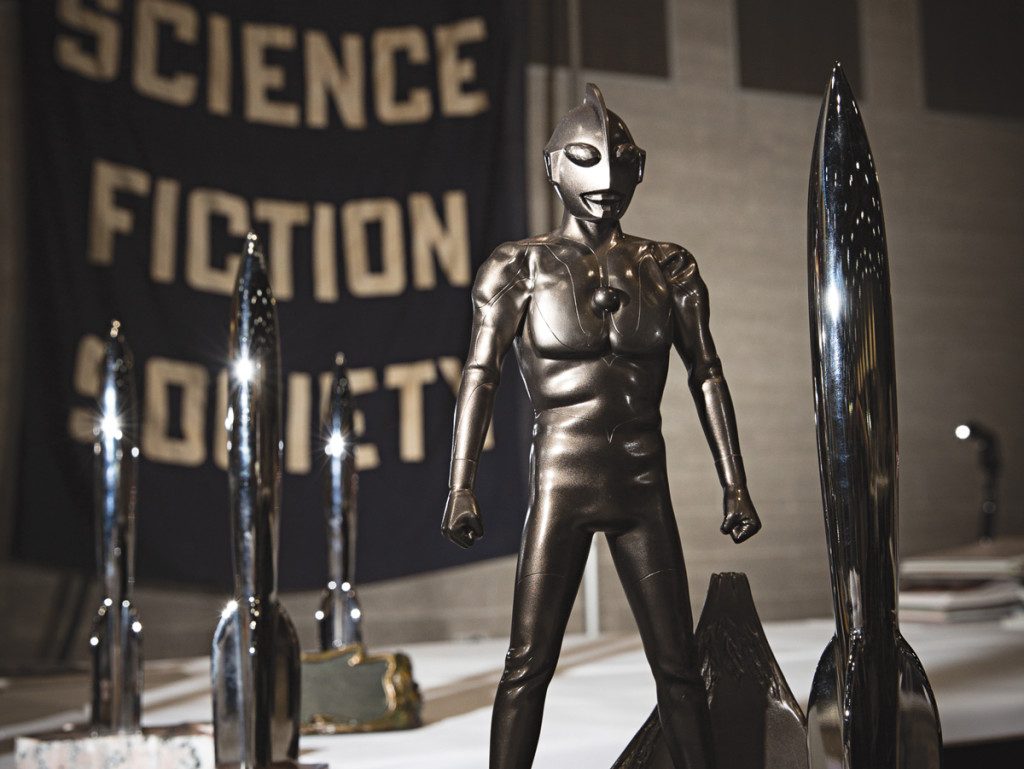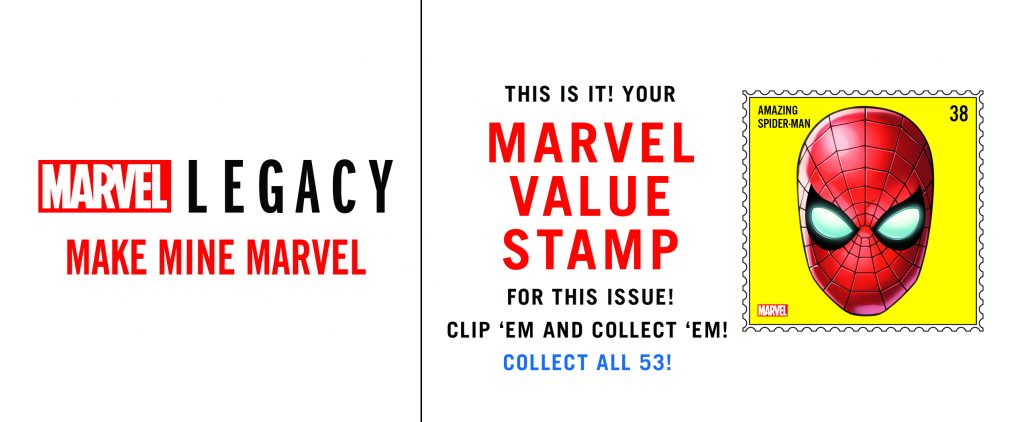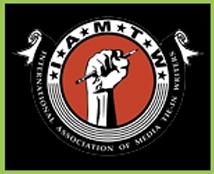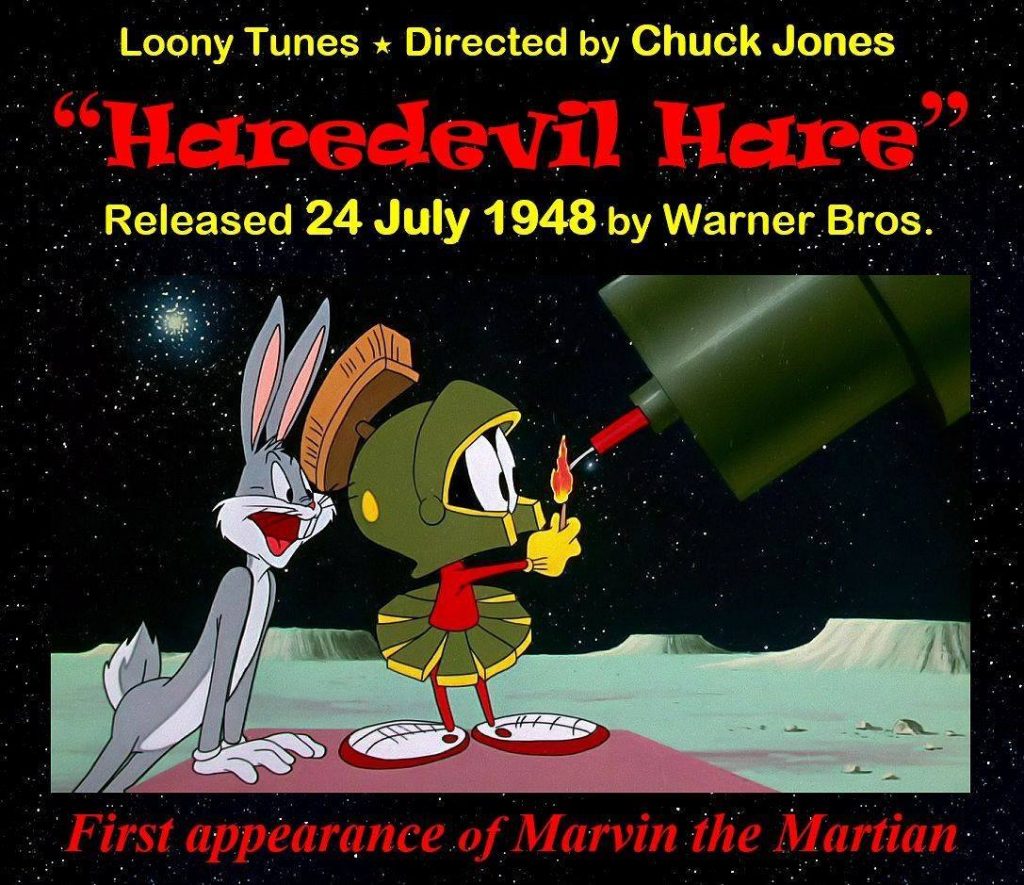
By Chris M. Barkley and Vince Docherty
Some VERY Modest Proposals for The Hugo Awards
“Our dilemma is that we hate change and love it at the same time; what we really want is for things to remain the same but get better.” — Sydney J. Harris
Chris Barkley: Change is hard. It’s hard for those who perceive it as a threat to a well-established order of normalcy and for those who seek to improve on an existing situation.
Two years ago, Vincent Docherty, a former Hugo Awards administrator and a former Worldcon Chair, approached me with a new proposal, which was then followed by several more ideas, that I found that I agreed would strengthen the Hugo Awards for the foreseeable future.
I know that by presenting these ideas, I know I will be involving myself with a very tough and potentially divisive argument with the more conservative elements of the literary branch of sf fandom. While I am delighted to be asked by my co-author, Vincent Docherty, to undertake this endeavor, I also recognize that these proposed changes will be viewed with unadulterated glee by some and absolute revulsion by others. And the prevalence of multiple outlets of social media will have its advocates and detractors at war with each other within hours of the publication of this article.
Some will say that I am doing this just to be a disruptor and a gadfly. I can only say that everything that I have done regarding the Hugo Awards I have done to ensure that they remain fair, equitable, engaging, exciting and most importantly, relevant.
The changes the Hugo Award categories have undergone since 2003 have led to higher numbers of fans participating in the voting process and an ever-growing acceptance and recognition from the public at large. But, as well off as the Hugo awards are now, there’s always room for improvement. Which brings us to our proposals.
Vincent Docherty: The Hugo Awards have grown considerably in visibility and in participation over the last decade. In my view that’s been mostly positive, although there have been big bumps in the road.
We have tried to adapt the Hugo categories and rules to the changes occurring to the genre, particularly the shift to online works and participation.”
However, a number of issues have arisen, in my view:
Where the categories don’t fully reflect the breadth of work begin done, either because there is so much more work (eg. fiction, very short BDP), or changes have occurred such that categories become confused (arc-story, rather than episodic television series).
And where the category definitions are no longer fit-for-purpose, or are difficult for nominators and administrators to use, is resulting in works appearing on the ballot in categories which cause significant disagreement (eg. Related Work and the Fan and Semi-Pro categories).”
Given the number of changes to the rules currently being enacted and the general resistance to adding new categories, I expect that these proposals will need time to be considered and worked.
However, we believe the time is right to raise them now. I think there is both sufficient need and specific enough possible solutions to propose changes to the Novel, Related Work and BDP categories.
Proposal One: A Reorganization of the Best Novel Category
The Current Amendment
3.3.1: Best Novel. A science fiction or fantasy story of forty thousand (40,000) words or more
Replace with:
3.3.1: Best Science Fiction Novel. A science fiction story of forty thousand (40,000) words or more.
And
3.3.2: Best Fantasy Novel. A fantasy story of forty thousand (40,000) words or more.
VINCE DOCHERTY: The Best Novel is by far the category with the highest participation by nominators and voters every year, at a time of great strength in genre publishing. By splitting the category in a simple way, the Worldcon community can recognise more works.
The most useful comparison of what we are trying to accomplish is the Locus Awards, which divide the Novel nominees into the following categories:
- Locus Award for Best Science Fiction Novel
- Locus Award for Best Fantasy Novel
- Locus Award for Best Horror Novel
- Locus Award for Best First Novel
- Locus Award for Best Young Adult Book
Analysis:
- Under the current WSFS rules, the John W. Campbell Award For Best New Writer is probably sufficient to cover first time writers, and/or risks duplicating works.
- There is also an emerging YA award, which could potentially become a Hugo category in the future. (Or not, depending on what happens at the Helsinki Business Meeting.)
- The nominators and voters of the Hugo Awards have predominantly nominated sf and fantasy works rather than horror. (We therefore offer the conjecture that if nominators want to nominate a work of horror, it can be done as a work of fantasy.)
- Definition of the boundaries between fantastic genres are notoriously difficult, nevertheless, almost all genre novels are published with a clear category (perhaps not surprising as the genres are largely publishing-derived).
Rule 3.2.6 refers to the fiction categories by name and will need minor adjustment.
(Suggestion: Borrow simplifying text from 3.2.5 ‘story categories’.)
Rule 3.2.8 relating to fiction category boundaries remains unchanged.
Chris Barkley: Both Vince and I believe this move is probably long past overdue. Other awards, most notably the Locus, Sunburst (since 2008), Seiun and the newly-formed Dragon Awards have no problem at all with nominating or administering multiple novel award categories.
We also feel that on the whole, Hugo Award nominators have proven to be very adaptable to adjusting to new categories and rule changes over the past decade to produce (Rabid and Sad Puppy interferences aside) some very strong ballot nominees.
Here are some examples of how this category change might look like by using the existing long lists of nominees from 2010 through 2016 (with the deliberate redaction of the recent nominees advocated by the Sad/Rabid Puppy movement).
2010
SF
- The Windup Girl, by Paolo Bacigalupi
- The City & The City, by China Mieville
- WWW: Wake, by Robert J. Sawyer
- Boneshaker, by Cherie Priest
- Julian Comstock: A Story of 22nd-Century America, by Robert Charles Wilson
Fantasy
- Palimpsest, by Catherynne M. Valente
- Unseen Academicals, by Terry Pratchett
- Finch, by Jeff VanderMeer
- Lifelode, by Jo Walton
- The Price of Spring, by Daniel Abraham
2011
SF
- Blackout/All Clear by Connie Willis
- The Dervish House by Ian McDonald
- Cryoburn by Lois McMaster Bujold
- Surface Detail by Iain M. Banks
- Ship Breaker by Paolo Bacigalupi
Fantasy
- The Hundred Thousand Kingdoms by N.K. Jemisin
- Feed by Mira Grant
- Who Fears Death by Nnedi Okorafor
- Kraken by China Mieville
- Shades of Milk and Honey by Mary Robinette Kowal
2012
SF
- Embassytown by China Mieville
- Leviathan Wakes by James S.A. Corey
- The Quantum Thief by Hannu Rajaniemi
- Rule 34 by Charles Stross
- Ready Player One by Ernest Cline
- Children of the Sky by Vernor Vinge
Fantasy
- Among Others by Jo Walton
- A Dance With Dragons by George R.R. Martin
- Deadline by Mira Grant
- The Kingdom of Gods by N.K. Jemison
- Mechanique by Genevieve Valentine
2013
SF
- Redshirts: A Novel with Three Codas by John Scalzi
- 2312 by Kim Stanley Robinson
- Captain Vorpatril’s Alliance by Lois McMaster Bujold
- Caliban’s War by James S.A. Corey
- Existence by David Brin
Fantasy
- Blackout by Mira Grant
- Throne of the Crescent Moon by Saladin Ahmed
- Monster Hunter Legion by Larry Correia
- The Killing Moon by N.K. Jemisin
- Glamour in Glass by Mary Robinette Kowal
2014
SF
- Ancillary Justice by Ann Leckie
- Neptune’s Brood by Charles Stross
- The Shining Girls by Lauren Beukes
- London Falling by Paul Cornell
- Abaddon’s Gate by James S.A. Corey
Fantasy
- The Wheel of Time by Robert Jordan & Brandon Sanderson
- Parasite by Mira Grant
- A Stranger in Olondria by Sofia Samatar
- The Golem and the Djinni by Helene Wecker
- The Republic of Thieves by Scott Lynch
2015
SF
- Ancillary Sword by Ann Leckie
- The Three Body Problem by Liu Cixin
- Lock In by John Scalzi
- The Martian by Andy Weir
- My Real Children by Jo Walton
Fantasy
- The Goblin Emperor by Katherine Addison
- City of Stairs by Robert Jackson Bennett
- Words of Radiance by Brandon Sanderson
- The Mirror Empire by Kameron Hurley
- Full Fathom Five by Max Gladstone (speculative choice to replace Skin Game by Jim Butcher)
2016
SF
- Ancillary Mercy by Ann Leckie
- Aurora Kim by Stanley Robinson
- Karen Memory by Elizabeth Bear
- The Just City by Jo Walton
- The Water Knife by Paolo Bacigalupi
Fantasy
- The Fifth Season by N.K. Jemisin
- Uprooted by Naomi Novik
- The Traitor Baru Cormorant by Seth Dickinson
- The Grace of Kings by Ken Liu
- Sorcerer to the Crown by Zen Cho
Proposal Two: A Reorganization of the Best Related Category
The Current Amendment
3.3.5: Best Related Work. Any work related to the field of science fiction, fantasy, or fandom, appearing for the first time during the previous calendar year or which has been substantially modified during the previous calendar year, and which is either non-fiction or, if fictional, is noteworthy primarily for aspects other than the fictional text, and which is not eligible in any other category.
Replace with
3.3.5: Best Non-Fiction Book. Any book or work related to the field of science fiction, fantasy, or fandom, appearing for the first time during the previous calendar year or which has been substantially modified during the previous calendar year, and which is clearly non-fiction or has a basis in fact with the intent to be educational and/or informational in nature and which is not eligible in any other category.
And
3.3.6: Best Art Book. Any art book or related volumes of works in the field of science fiction, fantasy, or fandom, appearing for the first time during the previous calendar year or which has been substantially modified during the previous calendar year.
VINCE DOCHERTY: This category has changed significantly over the years. Created in 1980 as ‘Best Non-Fiction Book’ it was changed to ‘Best Related Book’ in 1999 and became the current ‘Best Related Work’ in 2010.
A review of the finalists in the category up to 2010 shows that almost all of them were either non-fiction books (including biographical and academic books) or art books of various types.
The well-intended change in 2011 from Book to Work (which I supported!) was a response to the rapid rise of e-books, web-sites and blogs, alongside test categories such as best website.
However this change, changes to other categories and clarifications to the rules to make clear that it is the content, not the container that is important in an e-world, caused uncertainty for nominators, and the complex eligibility interactions for administrators resulted in works such as podcasts, music recordings and blogs appearing on the ballot, alongside a much reduced number of non-fiction work and almost no art-related works. In many cases these new types of work could have been placed in a different category such as BDP or Fancast or Fan writer, and in several cases in fact they appeared in both.
Data supporting a new approach:
- A review of the top 15 works nominated each year shows that significant numbers of non-fiction and art books are still being judged Hugo-worthy by many nominators.
- Looking again at the Locus Award, (and the Locus annual recommendations list), one can see two strong and stable categories; Best Non-fiction Book and Best Art Book.
- The definition of content in the Hugo rules now explicitly makes clear that electronic forms of text are equivalent to print. The word ‘book’ can therefore be used to describe a unit of published work in either electronic or printed form.
We also believe there is a need to better promote art in the Hugo Awards, reflecting the significance art has to the genre.
Chris Barkley: Speaking personally, I think it would be nice to see more artistic works being honored with Hugo Awards.
Proposal Three; A Reorganization of the Best Dramatic Presentation Category
The Current Amendments
:3.3.7: Best Dramatic Presentation, Long Form. Any theatrical feature or other production, with a complete running time of more than 90 minutes, in any medium of dramatized science fiction, fantasy or related subjects that has been publicly presented for the first time in its present dramatic form during the previous calendar year.
And
3.3.8: Best Dramatic Presentation, Short Form. Any television program or other production, with a complete running time of 90 minutes or less, in any medium of dramatized science fiction, fantasy or related subjects that has been publicly presented for the first time in its present dramatic form during the previous calendar year.
We suggest the creation of four BDP categories:
3.3.7: Best Dramatic Presentation, Long Form
Any theatrical feature or other production, with a complete running time of more than 90 minutes, in any medium of dramatized science fiction, fantasy or related subjects that has been publicly presented for the first time in its present dramatic form during the previous calendar year. (Intent: Mainly for theatrical films, theater presentations and audio books, etc.)
3.3.8: Best Dramatic Presentation, Episodic Form.
Any television program or other production, with a complete running time of between 30 and 90 minutes, in any medium of dramatized science fiction, fantasy or related subjects that has been publicly presented for the first time in its present dramatic form during the previous calendar year. No more than two episodes of any one series may be finalists in this category. (Intent: Stand alone television episodes or other media.)
3.3.9: Best Dramatic Presentation, Short Form.
Any production, with a complete running time of less than 30 minutes, in any medium of dramatized science fiction, fantasy or related subjects that has been publicly presented for the first time in its present dramatic form during the previous calendar year. No more than two episodes of any one show may be finalists in this category. (Intent: Mainly current internet/youtube type works, or cartoon/serials, typically less than 30 minutes.)
3.3.10: Best Dramatic Presentation, Series.
Any episodic series or other dramatic production, with more than four episodes of sixty minutes or more, or a running time of 240 minutes or more in any medium of dramatized science fiction, fantasy or related subjects that has been publicly presented for the first time in its present dramatic form during the previous calendar year.
(Intent: Streaming series, mini-series or episodic television shows are eligible, the key point being that the intent of the amendment is to honor programs comprising a single story-arc presented over a number of episodes, rather than separate episodes in an anthology series, which would be eligible in BDP-Episodic.)
Current Rule 3.2.10 relating to BDP category boundaries remains unchanged. Also, Current Rule 3.2.9: No work shall appear in more than one category on the final Award ballot.
VINCE DOCHERTY: After fifteen years, we both thought that is was time to overhaul and reorganize the Best Dramatic Presentation Hugo category.
The basic principles the Hugos use for works are measurability (word count, minutes) and discrete units of content, rather than the container. In practice the story-arc has been used as the main determinant of ‘discrete/single work’ by both voters and administrators, with length then used to determine which category to use. Hence story-arc based (mini)series and pairs/trios of episodes have appeared on the ballot in both short and long form. Stand-alone episodes and movies have always been treated as single works, and the case where movies are part of a series seems not to be an issue, in a similar way to novels in a series – they generally are separated by years and are marketed as discrete works.
We have seen a huge increase in the number of genre series in recent years especially with services such as Hulu, Netflix and HBO. A quick analysis gives a count of 80 such series in English in the last year or so (see below). This presents us with an opportunity to honor a series through the nomination process.
Here is a long list of recent and/or current television and streaming (mini-)series:
- 11.22.63
- 12 Monkeys
- 3%
- A Series of Unfortunate Events
- American Horror Story
- Ascension
- Black Mirror
- Black Sails
- Class
- Colony
- Containment
- Continuum
- Crazyhead
- Dark Matter
- DC: Arrow
- DC: Gotham
- DC: Legends of Tomorrow
- DC: Supergirl
- DC: The Flash
- Dirk Gently’s Holistic Detective Agency
- Doctor Who
- Emerald City
- Frequency
- From Dusk Till Dawn
- Game of Thrones
- Glitch
- Grimm
- Helix
- Heroes Reborn
- Hunters
- Humans
- iBoy
- iZombie
- Killjoys
- Limitless
- Lucifer
- Marvel: Agent Carter
- Marvel: Agents of S.H.I.E.L.D.
- Marvel: Jessica Jones
- Marvel: Legion
- Marvel: Luke Cage
- Marvel: Daredevil
- Mr. Robot
- Once Upon a Time
- Orphan Black
- Outcast
- Outlander
- Penny Dreadful
- Powers
- Preacher
- Second Chance
- Sense8
- Shadowhunters
- Sleepy Hollow
- SS-GB
- Star Wars Rebels
- Stranger Things
- Supernatural
- Teen Wolf
- The 100
- The Aliens
- The Expanse
- The Leftovers
- The Magicians
- The Man in the High Castle
- The OA
- The Returned
- The Shannara Chronicles
- The Strain
- The Vampire Diaries
- The Walking Dead
- The X-Files
- Thunderbirds Are Go
- Travelers
- Twin Peaks
- Under the Dome
- Van Helsing
- Westworld
- Z Nation
- Taboo
VINCE DOCHERTY: The logic of series here is possibly different from yours, in that I distinguish a series which is a single story arc from one that is essentially a collection or anthology of separate episodes.
Chris Barkley: Indeed it does; as an American, I am more used to thinking that a nominee in this category should not be just a single story arc within a series, but to judge and nominate the series episodes as a whole entity. In fact, the BDP Hugo were awarded to an entire seasons of The Twilight Zone on three occasions in the early 1960’s.
VINCE DOCHERTY: It seems to me that this is the key request being asked by lots of voters – how to be able to nominate a single episode which is clearly outstanding, from a series which overall is outstanding but where it’s hard to single-out one episode.
Chris Barkley: Which I totally agree with. But, inversely, we don’t want Hugo voters using the BDP Series to nominate entire seasons of shows like Black Mirror, which is an anthology series of unconnected, one-off episodes.
VINCE DOCHERTY: There are problems with any categorization of course. The choice of lengths, which is already an issue (unless we choose to soften them to a guideline) remains. Also where a series comprises a series of arcs – Doctor Who, for instance, has had cases of pair/trios of episodes nominated as single works. I imagine that could be dealt with by categorizing them as longer single works, but not the whole. Another possible issue is dealing with nominations of episodes from a series which is also nominated as a whole (this occurs now as well).
Chris Barkley: I imagine that Rule 3.2.9. might be applied by the Hugo Administrators or that the works may be removed or disqualified altogether, solely at their discretion as per the WSFS Constitution, if several arcs from the same show were nominated. But who knows? A better solution may come through the debate process and further arbitration of the amendments.
Both Vince and I thank you for your time and attention.












